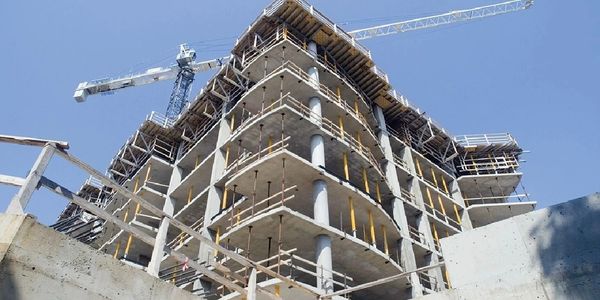Welcome to Zeolite Composites, LLC
- Cost effective and scalable zeolite-based environmental solutions and products.
- Science and data driven approach.
Welcome to Zeolite Composites, LLC

Concrete is the second most used material on the planet and responsible for approximately 8% of global CO₂ emissions.
Reducing concrete’s CO₂ footprint is critical and our clinoptilolite zeolite is the solution.

We are proud to be the first SCM material supplier to have a methodology accepted and listed by Climate Action Reserve (CAR)

Our SCM decreases reliance on carbon-intensive Ordinary Portland Cement (OPC) and is simply the lowest carbon footprint alternative to replace OPC, furnace slag, and fly ash.

GWP Comparison of Zeolite vs. Other Common SCMs:
NOTE: GWP of Ordinary Portland Cement (OPC) ~922 kg CO₂-eq/ton
Why it matters:
• Credibility - Third‑party verified sustainability data.
• Clarity - Lifecycle impact information at your fingertips.
• Community impact - Building greener, more resilient infrastructure.
An EPD isn’t just a document—it’s proof that innovation and responsibility go hand‑in‑hand.

University of Washington
Department of Materials Science & Engineering












Post Cure CO₂ Absorption and Carbonation
Unlike traditional concrete, zeolite concrete continues to interact with atmospheric CO₂ even after curing. CO₂ diffuses into the concrete pores and reacts with calcium (Ca) in the zeolite concrete to form calcium carbonate (CaCO₃), a stable compound that remains locked in the concrete. Our zeolite concrete composite captures and stores atmospheric CO2 through a carbonation reaction. Once absorbed, the carbon further enhances the materials’ properties.
Step-by-Step Breakdown
Carbon Capture Efficiency
Eco-Friendly Benefits
Applications

Clinoptilolite zeolite (Zeolite) is a potent supplementary cementitious material (SCM) with high reactivity, abundant pozzolanic activity, and the smallest net carbon footprint compared to other SCMs. While carbonation has been explored as a potential approach for strengthening concrete made with Ordinary Portland Cement (Cement), the opportunity for synergistic reactions involving Zeolite and carbonation have been underexplored. The effect of Zeolite on the initial hydration kinetics was studied by the University of Washington Department of Materials Science & Engineering, and the resulting composition, microstructure and strength were assessed for up to 30% Cement replacement (CR) with Zeolite increases strength development relative to non-zeolite Cement concrete by as much as 40% over 91 days of curing. Carbonation accelerates the increase in compressive strength, promoting over 30% increase in strength (at 20% CR) after only 4 weeks. Carbonation also mitigates loss in strength for mixes with higher zeolite concentrations up to 30% CR. Carbonation results in formation of a densified outer “shell” of carbonated material and reduction in overall porosity and pore size. Post cure carbonation can improve the properties of concrete and precast concrete products that use clinoptilolite zeolite as an SCM for CR.
For the past two years, Zeolite Composites, LLC has been collaborating with the Natural History Museum of Los Angeles County, along with other community scientists and partners, on a lead clean-up project in East LA where approximately 13,000 homes were built on land contaminated by the former Exide lead acid battery plant. Through this collaboration, an effective, low-cost, and scalable remediation solution for lead contamination was developed by amending the soil with natural and abundant clinoptilolite zeolite. Our zeolite quickly absorbs and permanently encapsulates lead particles that are harmful to humans, particularly young children.


On September 21, 2024, local Los Angeles artists Maru Garcia and Beatriz Jaramillo unveiled their amazing and thought-provoking artwork as part of the “Art and Science Collide” exhibit presented by the Getty. The exhibit featured the collaborations between Dr. Aaron Celestian with the Natural History Museum Los Angeles County (NHMLA), Prospering Back Yards, Zeolite Composites, and many others. The goal was to find practical solutions to the very difficult problem of lead remediation from the yards of thousands of homes in East Los Angeles. The art piece titled “Boiling Rocks 1” is a mosaic comprised of pellets made from lead contaminated soil from the yards. “Boiling Rock 2” is another mosaic showing the weblike structure of zeolite as seen under a Scanning Electron Microscope. The sculptures collectively titled “Boiling Rocks 3” are monolithic “living” zeolite sculptures designed to remediate the soil as they disintegrate on contaminated land when exposed to the natural elements. The structures are composed of compressed soil amendments (clay, mulch, soil and zeolite) and supported by a steel pole that will slowly reveal the words “Madre,” “Alive” and “Home” as the sculpture dissolves. Everyone, especially our young and growing children, deserve healthy soil. Through collaborations like this, we are working together to make that a reality.










As Governor, Bob Ferguson will support carbon reduction projects and environmental initiatives like ours. We look forward to collaborating with Bob's climate team.
Posted with Permission from Bob Ferguson
Copyright © Zeolite Composites, LLC - All Rights Reserved
Smarter Solutions for Sustainable Change ™
Zeolite Makes the World Better ™